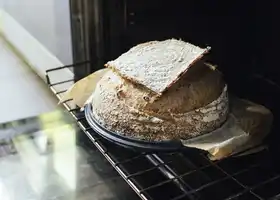Download Stashcook Now. Get the best meal planning app for your family.
How to make Wholemeal Sourdough Bread Recipe

Izy Hossack - Top With Cinnamon
A step by step guide complete with photos and GIFs on how to make a loaf of sourdough bread using wholemeal flour.
Ingredients
1 tbsp sourdough starter (100% hydration, recently fed)
50 g bread flour (I used dark rye flour)
50 g lukewarm water
500 g strong wholemeal bread flour
375 g lukewarm water
10 g fine table salt
Method
1
2
3
4
5
6
7
8
9
10
11
12
13
14
15
16
17
18
19
20
21
22
23
Social
Email:
hello@stashcook.com© Copyright 2026 Stashbox Ltd. All rights reserved.